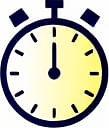Boosting Productivity Through Motivational Goal Tracking
 by Verner Mayer
by Verner Mayer
Motivational goal tracking helps individuals stay focused and achieve more by monitoring progress and maintaining enthusiasm. This approach combines goal setting with practical strategies like hyperfocus and time blocking to enhance daily productivity for professionals and students alike.
Goal tracking is a key element in improving daily routines. It involves regularly checking progress toward objectives to keep motivation high. For busy professionals, this method offers a way to see tangible results from their efforts.
In the content, we focus on how goal tracking can transform ordinary days into productive ones. By setting clear targets, individuals can maintain steady progress. This practice works well for students who need structure in their schedules.
One effective way to use hyperfocus is by pairing it with goal tracking. Hyperfocus means dedicating full attention to a single task for a set period. When combined with tracking, it ensures that efforts align with overall aims. For example, a professional might allocate time each day to work on a project milestone and note the advancements made.
Time blocking is another useful technique. It means dividing the day into specific segments for different activities. When integrated with goal tracking, this creates a balanced routine. Students often find that blocking out study periods helps them cover material efficiently while monitoring their advancement.
To start with goal tracking, begin by defining achievable objectives. Write them down and break them into smaller steps. This makes the process less overwhelming and more attainable. Regular reviews of progress can provide a sense of accomplishment, which fuels further motivation.
Consider a simple example: a professional aiming to complete a report. They might set a goal to finish the outline by week's end. Using time blocking, they schedule two-hour slots for writing. After each session, they update their tracking log to note what was achieved. This builds a habit of reflection and adjustment.
For students, goal tracking can apply to academic targets. Suppose a student wants to improve grades in a subject. They could track daily study hours and quiz scores. Over time, this reveals patterns and areas for improvement, leading to better outcomes.
Tools for goal tracking vary from apps to simple notebooks. The choice depends on personal preference and needs. Digital tools often include reminders and visual progress bars, while notebooks allow for handwritten notes and personalization.
Maintaining motivation is essential in goal tracking. Celebrating small wins keeps the process enjoyable. For instance, after reaching a minor milestone, take a short break or reward yourself with a favorite activity. This positive reinforcement encourages consistency.
Challenges may arise, such as losing interest or facing setbacks. In these cases, revisit the original goals and adjust as needed. Flexibility ensures that tracking remains helpful rather than rigid.
When incorporating hyperfocus, select tasks that align with top priorities. This technique allows for deeper work and higher quality results. By tracking time spent in hyperfocus, individuals can optimize their schedules for peak performance.
Time blocking complements this by providing a framework for the day. Assign blocks for focused work, breaks, and other responsibilities. Track how well these blocks meet the set goals to refine future planning.
In practice, many find that combining these methods leads to noticeable improvements. A professional might track weekly goals and use time blocking to manage meetings and projects. This systematic approach reduces stress and increases efficiency.
For students, tracking assignments and exam preparation through these techniques can lead to better academic success. Regular monitoring helps identify when to seek help or adjust study methods.
Overall, the benefits of motivational goal tracking extend beyond immediate tasks. It fosters a mindset of continuous improvement and self-discipline. By regularly assessing progress, individuals build resilience and adapt to changes effectively.
To implement this, start small. Choose one area of life to apply goal tracking, such as work or studies. Use simple metrics to measure success and build from there. Over time, this practice can become a natural part of daily life.
In summary, through consistent tracking and strategic planning, anyone can enhance their productivity. The key lies in staying committed and using tools like hyperfocus and time blocking to support goals.
